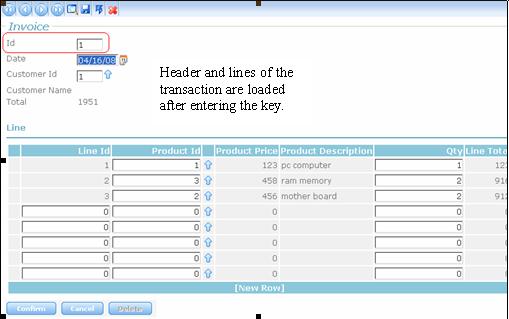No more flickering! Better performance..
When a user event is executed on the web server, it is always executed using Ajax. It's done through POST, not through submit, so all the information is sent to the server (or the necessary information in some cases), with only the necessary information returning to the client. That is to say, the response sent to the client does not bring redundant information.
Example 1: Form Validation
If the web form has the Customer Code in the Invoice Transaction, and three inferred fields: Customer Name, Customer Address, Customer Telephone, all these fields will be sent to the client machine in a single roundtrip to the server.
In the invoice transaction (header and lines), when the user enters the invoice code, the following happens:
A. The transaction mode is inferred when exiting the code field.
B. If the entered code is a valid invoice code, the UPD mode is inferred and all the invoice information (header and lines) is sent to the client, without posting the form by clicking on a GET button.

Example 2: Web Components Refresh
Suppose you have a web form with two or more web components on it (one of them is the "login" web component). When the final user logs in, and confirms (presses the login button), there is no general flickering effect, only in the login web component.
Even though the refresh event of the container of the web components is executing on the server side, the information is sent to the client in an AJAX way, and that is the reason why the user does not realize that the whole page is refreshed.